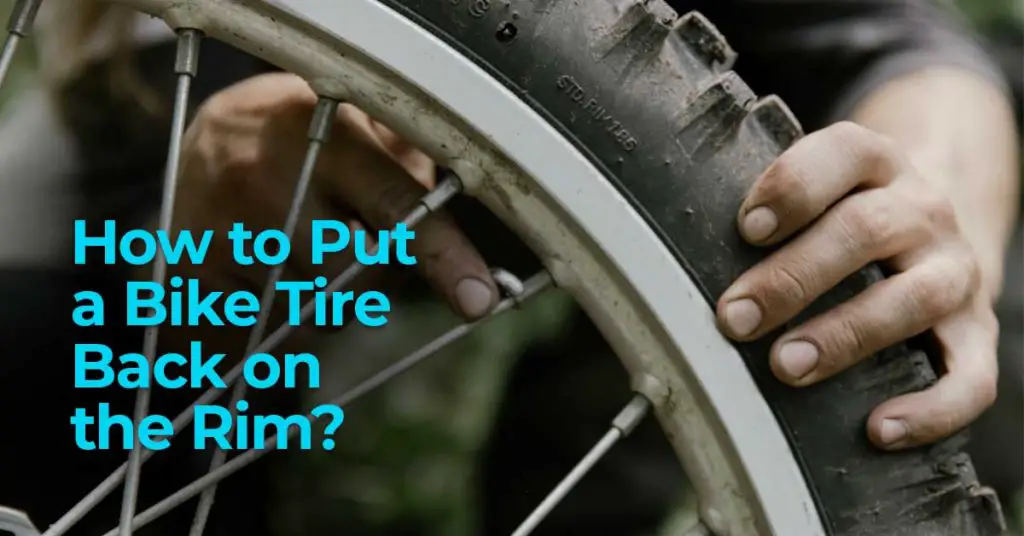Table of Contents
Have you ever suddenly realized your bike tire is flat, even though you just recently checked it and it was perfectly fine? It is a common issue for cyclists, and it is one that you will need to address quickly in order to keep your ride safe and enjoyable.
Yes, bike tires can deflate over time. This is primarily due to the natural permeability of the rubber used in the inner tubes or the tire itself. Over a period of time, air molecules can slowly seep through the rubber, causing a gradual loss of pressure in the tire.
That’s what we’ll be exploring in this blog article!
Bike tires can deflate due to various reasons. Here are some common causes:
- Natural air permeability:
The rubber used in inner tubes and tires are slightly porous, which means that over time, air molecules can pass through the rubber and cause a gradual loss of pressure.
- Puncture or damage:
Sharp objects like nails, glass shards, or thorns can puncture the tire or inner tube, leading to a sudden or slow leak of air. This is a common cause of flat tires.
- Valve issues:
The valve stem, which allows air to be pumped into the tube, can sometimes develop leaks or become loose. This can result in slow air loss or difficulty in maintaining proper inflation.
- Incorrect tire seating:
If the tire is not properly seated on the rim, it may not create an airtight seal, leading to air leakage. This can happen during installation or when replacing a tire.
- Temperature changes:
Extreme temperature variations can affect tire pressure. Cold temperatures can cause the air inside the tire to contract, leading to a decrease in pressure. Conversely, hot temperatures can cause the air to expand and increase the tire pressure.
- Aging and wear:
Over time, the rubber in the tire or inner tube can degrade, become brittle, or develop cracks. This can result in air leakage and gradual deflation.
To prevent frequent deflation, it is essential to regularly inspect your bike tires, maintain the recommended tire pressure, and promptly address any punctures or damage.
How Long Does It Take Bike Tires To Deflate?
The rate at which bike tires deflate can vary depending on several factors. Here are some general guidelines:
- Natural air permeability:
Bike tires, particularly the inner tubes, are slightly porous, and air molecules can slowly pass through the rubber over time. This can result in gradual air loss. On average, bike tires can lose a few pounds per square inch (psi) of pressure over the span of a week or two.
- Punctures or damage:
If a bike tire experiences a puncture or damage, the rate of deflation can be more rapid. A sharp object like a nail or glass shard can cause an immediate loss of air or a slow leak, depending on the size of the puncture. A tire with a significant puncture can deflate within a few minutes or hours, while a slow leak may take days or weeks to noticeably deflate the tire.
- Temperature changes:
Extreme temperature variations can affect tire pressure. In cold weather, the air inside the tire contracts, causing a decrease in pressure. This can result in noticeable deflation over a few hours or days. In hot weather, the air expands and increases the tire pressure, potentially leading to slower deflation.
- Quality of the inner tubes:
The quality of the inner tube can also influence the rate of deflation. Higher-quality tubes with better construction and materials tend to have lower permeability and can retain air pressure for longer periods compared to lower-quality tubes.
It’s important to note that these are general estimates, and the rate of deflation can vary based on individual circumstances and factors such as tire size, riding conditions, storage conditions, and the quality of the tires and inner tubes. Regularly checking the tire pressure and maintaining the recommended inflation levels will help ensure optimal performance and safety.
Tips and Tricks for Maintaining Bike Tires
Maintaining your bike tires is an important part of keeping them inflated for longer. Here are a few tips and tricks to help you keep your bike tires in top condition:
- Make sure to check the tire pressure regularly and inflate the tire to the recommended pressure for your tire type.
- Clean the tires after each ride to remove any dirt and debris that can cause punctures and other damage.
- If you notice any signs of wear and tear, then replace the tire as soon as possible.
- If you are riding in extreme temperatures, then make sure to choose tires that are designed to withstand those temperatures.
- Check the valve stem regularly to make sure it is not loose or damaged.
Different Types of Bike Tires
There are various types of bike tires available, each designed for specific riding conditions, terrains, and purposes. Here are some common types of bike tires:
1. Road Bike Tires: Road bike tires are designed for smooth and paved surfaces. They are typically narrow, with a slick or lightly treaded surface to minimize rolling resistance and maximize speed on roads. Road bike tires often come in sizes like 700c or 650b and have high-pressure ratings.
2. Mountain Bike Tires: Mountain bike tires are built to handle off-road trails and rugged terrains. They are wider and have more aggressive tread patterns for enhanced traction and control on dirt, rocks, and varied surfaces. Mountain bike tires are available in different widths and tread designs to suit specific trail conditions, including cross-country (XC), trail, enduro, and downhill.
3. Hybrid Bike Tires: Hybrid bike tires are a versatile option for riders who enjoy a combination of road and off-road cycling. They provide a balance between smoothness on pavement and some capability on gravel paths or light trails. Hybrid tires usually have a semi-slick or lightly treaded pattern.
4. Cyclocross Tires: Cyclocross tires are specifically designed for cyclocross racing, which involves a mix of road, grass, mud, and obstacles. These tires have a moderate tread pattern that provides grip in muddy conditions while maintaining low rolling resistance on smoother surfaces.
5. Touring and Commuter Tires: Touring and commuter tires are built for long-distance rides, commuting, and carrying heavier loads. They have durable constructions, and puncture-resistant features, and often come with reflective sidewalls for increased visibility. These tires may have various tread patterns depending on the intended use.
6. Fat Bike Tires: Fat bike tires are extremely wide and designed for riding on soft surfaces like sand, snow, or mud. They provide excellent flotation and traction due to their large volume and low tire pressure capability. Fat bike tires often have aggressive, deep treads to dig into loose surfaces.
7. Gravel Bike Tires: Gravel bike tires are designed for mixed-terrain riding, including gravel roads, dirt paths, and rough surfaces. They typically have wider profiles with versatile tread patterns that offer a balance of grip and low rolling resistance on different terrains.
These are just a few examples of bike tire types, and there are many variations and subcategories available within each type. When choosing bike tires, consider your riding style, terrain, and specific needs to find the most suitable option for your bike.
Conclusion
Bike tire deflation is a common issue for cyclists, but it is one that you can easily manage with the right knowledge and tools. In this blog article, we have explored the effects of time on bike tire deflation and the various factors that can cause it.
We have also looked at the different types of bike tires and the importance of monitoring tire pressure.



